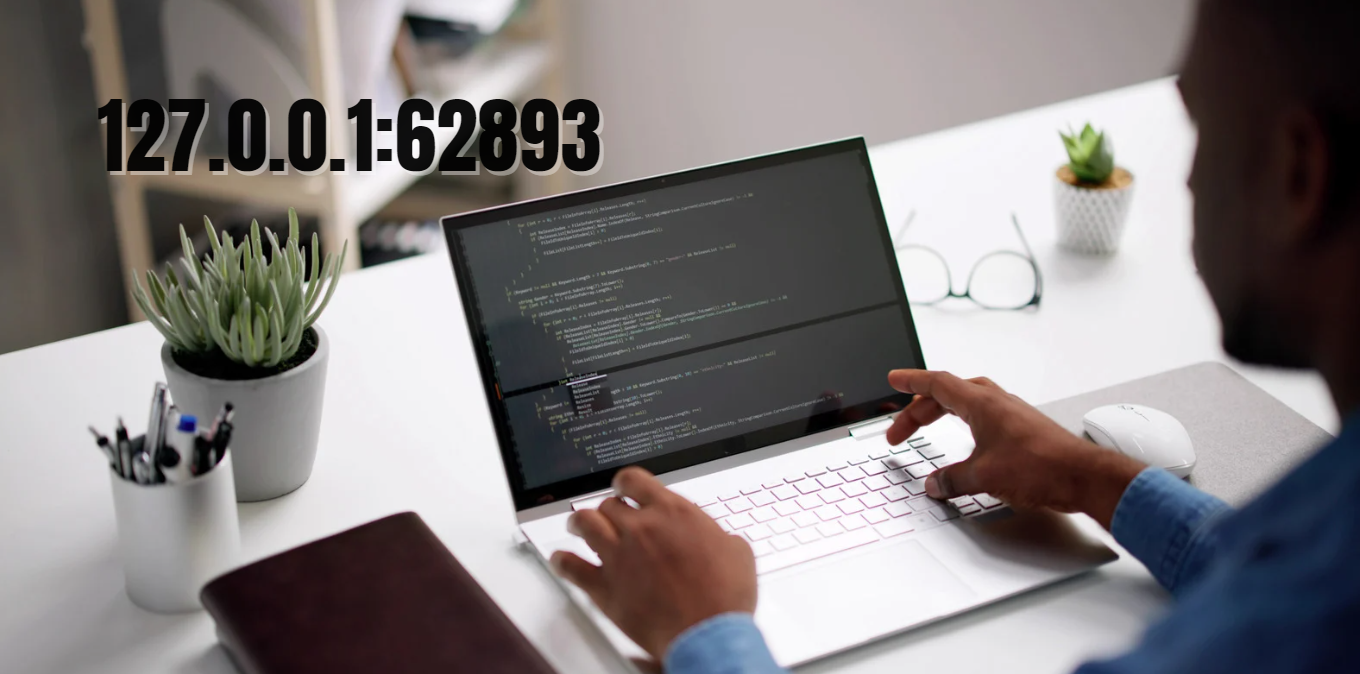Contents
- 1 Introduction
- 2 What Is 127.0.0.1?
- 3 What Is a Port Number?
- 4 What Is 127.0.0.1:62893?
- 5 Common Use Cases for 127.0.0.1:62893 in Development
- 6 Security Considerations for 127.0.0.1:62893
- 7 Troubleshooting Issues with 127.0.0.1:62893
- 8 Advanced Use of 127.0.0.1:62893 in Web Development
- 9 FAQs About 127.0.0.1:62893
- 10 Conclusion
Introduction
In the world of networking and web development, the IP address 127.0.0.1 is often considered one of the most important addresses. This is because 127.0.0.1, also known as the localhost, plays a fundamental role in testing, development, and communication within your own system. Coupled with a port number like 62893, this becomes an essential combination for developers and system administrators.
If you’re here to understand 127.0.0.1:62893, you’re likely interested in how localhost functions, what the port number signifies, and how they work together to provide a testing environment for applications. In this comprehensive article, we’ll break down each of these concepts and dive deeper into how they play a role in modern web development. We will also discuss common use cases, troubleshoot potential issues, and provide unique insights into their significance for the U.S. audience.
What Is 127.0.0.1?
At its core, 127.0.0.1 is the loopback address. It refers back to your own computer, meaning any network request made to 127.0.0.1 never leaves the device. Instead, it loops back into the system. This address is often referred to as localhost. When you type 127.0.0.1 or localhost in a browser, you’re essentially telling the system to connect to itself.
For developers, this is critical as it allows them to run applications locally without needing an external server. They can test websites, applications, and services in their local environments before deploying them on live servers.
Key Points About 127.0.0.1:
- Local Use: It’s not accessible by anyone over the internet; it is strictly for local testing and development.
- Internal Loop: It loops back within your own machine, helping you mimic server-client interactions without an external network.
- Testing Environment: It allows developers to run applications without affecting live environments or interacting with actual users.
What Is a Port Number?
When discussing 127.0.0.1:62893, the second half—62893—refers to the port number. In networking, an IP address (such as 127.0.0.1) identifies a machine, but the port number identifies a specific service running on that machine. Imagine an office building with multiple rooms (services) but one address (IP). The port number is like the room number.
The port number 62893 is one of many thousands of ports that can be assigned to different services. In local development environments, ports allow multiple applications or services to run simultaneously without interfering with one another.
Why Port Numbers Matter:
- Service Differentiation: Port numbers help differentiate services running on the same machine. For instance, a web server might run on port 80 while a database runs on port 3306.
- Custom Ports: Developers can assign custom ports (like 62893) to services they are running locally to prevent conflicts or tailor services to specific needs.
- Security: Firewalls and network security systems use port numbers to allow or block specific types of traffic. Open ports are often a vector for attacks, so it’s crucial to monitor them.
What Is 127.0.0.1:62893?
127.0.0.1:62893 is essentially a reference to a service running locally on port 62893. This could be a web application, database, or any other network service that the developer is testing on their local machine. When you navigate to 127.0.0.1:62893 in a browser, you’re telling the browser to connect to a service running locally on port 62893.
Here’s what this combination represents:
- 127.0.0.1: Localhost, the loopback address pointing to your own machine.
- 62893: The specific port where a service is running, which could be any local application (e.g., web server, API service, etc.).
In practical terms, developers or administrators might use 127.0.0.1:62893 when working on specific local projects. By navigating to this address in a web browser, they’re interacting with the application running locally without deploying it to a live server.
Common Use Cases for 127.0.0.1:62893 in Development
Developers and IT professionals in the U.S. commonly use 127.0.0.1 with a custom port, like 62893, during various stages of application development and testing. Below are some of the most frequent use cases:
1. Web Application Development
One of the most common reasons developers interact with localhost and port numbers like 62893 is to test web applications. During the development process, they can set up a local server (e.g., Node.js, Apache, or Python’s Flask) and run it on 127.0.0.1 with a port number to test their code in real-time.
2. API Testing
Developers building APIs will often run them locally before deploying them to a live environment. Running the API on 127.0.0.1:62893 allows them to make requests, test different endpoints, and debug errors locally without external users interacting with the API.
3. Database Testing
If you’re working on database management, you can set up a local database on 127.0.0.1. Ports like 62893 can be used to run test databases for local applications, ensuring that the database interacts correctly with your code.
4. Application Debugging
Local development on ports like 62893 allows for easier debugging. Developers can inspect their applications for errors, view logs, and run test scenarios without the pressure of working on a live system. This reduces downtime and the risk of affecting real users.
Security Considerations for 127.0.0.1:62893
While 127.0.0.1 and ports like 62893 are designed for local use, security is still a consideration, especially in environments where multiple developers or applications share the same system.
1. Firewall and Port Blocking
Though 127.0.0.1 is inaccessible from the outside world, it’s still good practice to use firewalls and port monitoring tools. Ensure that ports you don’t need are blocked to prevent vulnerabilities.
2. Port Conflicts
When running multiple services locally, you might encounter port conflicts. If two services try to use the same port, only one will run successfully, leading to potential disruptions. To avoid this, always assign custom ports like 62893 to specific services.
3. Local vs. External Requests
Remember that 127.0.0.1 restricts connections to local requests only. If you need to test your application externally, consider using a network address other than localhost (e.g., your machine’s actual IP address) while ensuring proper security configurations.
Troubleshooting Issues with 127.0.0.1:62893
Even though 127.0.0.1 is reliable for local testing, there are situations where you may run into problems accessing services via 127.0.0.1:62893. Here are some common issues and troubleshooting tips:
1. Port Already in Use
If you receive an error when trying to access 127.0.0.1:62893, it could be that another service is already using port 62893. Use the following steps to resolve this:
- Run a port-checking command (e.g., on Windows or on macOS/Linux) to see which service is using port 62893.
- If another service is using the port, either stop it or assign a new port to the service you’re trying to run.
2. Firewall Blocking Access
In some cases, your firewall settings may prevent local applications from binding to specific ports. Check your firewall configuration and allow connections to port 62893 if necessary.
3. Application Not Running
Ensure that the application or service you are trying to access on 127.0.0.1:62893 is actually running. If the application crashes or stops for any reason, you won’t be able to access it via this address.
4. Incorrect Configuration
Double-check the configuration files of the service you’re running to ensure that it is set to bind to 127.0.0.1 and port 62893. Sometimes, misconfigurations in web server or database files can prevent proper access.
Advanced Use of 127.0.0.1:62893 in Web Development
1. Running Multiple Services Locally
As you progress in development, you might want to run multiple services simultaneously. For instance, you could have a web server on 127.0.0.1:8080 and a database on 127.0.0.1:62893. Assigning different ports allows these services to coexist without conflict.
2. Using Virtual Hosts
For more advanced projects, developers can configure virtual hosts (via Apache or NGINX) that route different domain names to 127.0.0.1 but on different ports. This setup allows for more realistic testing environments, especially when simulating multiple domains or subdomains.
3. Docker and Containers
In modern development environments, Docker is often used to containerize applications. When using Docker, applications might run on different containers, each with its own IP and port. However, 127.0.0.1:62893 can still be used for local communication, especially if the services within Docker containers are exposed to localhost.
FAQs About 127.0.0.1:62893
1. What does 127.0.0.1:62893 mean?
127.0.0.1 refers to the localhost, which loops back to your own computer. 62893 is the port number on which a specific service (e.g., a web server or database) is running locally.
2. Why can’t I access 127.0.0.1:62893?
This issue may arise if the service assigned to 62893 is not running, or another application is using the port. Ensure the correct service is running and there are no port conflicts.
3. Is 127.0.0.1:62893 secure?
Since 127.0.0.1 is strictly local, external threats cannot access it. However, good local security practices, such as monitoring open ports, should still be maintained.
4. Can I use 127.0.0.1:62893 for production?
No, 127.0.0.1 is intended for local development and testing. For production environments, you’ll need to use an external IP address that is accessible over the internet.
5. How do I change the port number from 62893 to something else?
To change the port number, you’ll need to configure the settings of the application or service you are running. This can usually be done through configuration files or environment variables.
Conclusion
The combination 127.0.0.1:62893 plays a crucial role in local development. Understanding how 127.0.0.1 (localhost) works with ports like 62893 enables developers to build, test, and troubleshoot applications efficiently. Whether you’re running web servers, APIs, or databases, working with 127.0.0.1 allows you to simulate real-world scenarios without affecting live environments.
For developers and system administrators in the U.S., knowing how to utilize 127.0.0.1 effectively is essential for creating stable, secure, and efficient applications.







